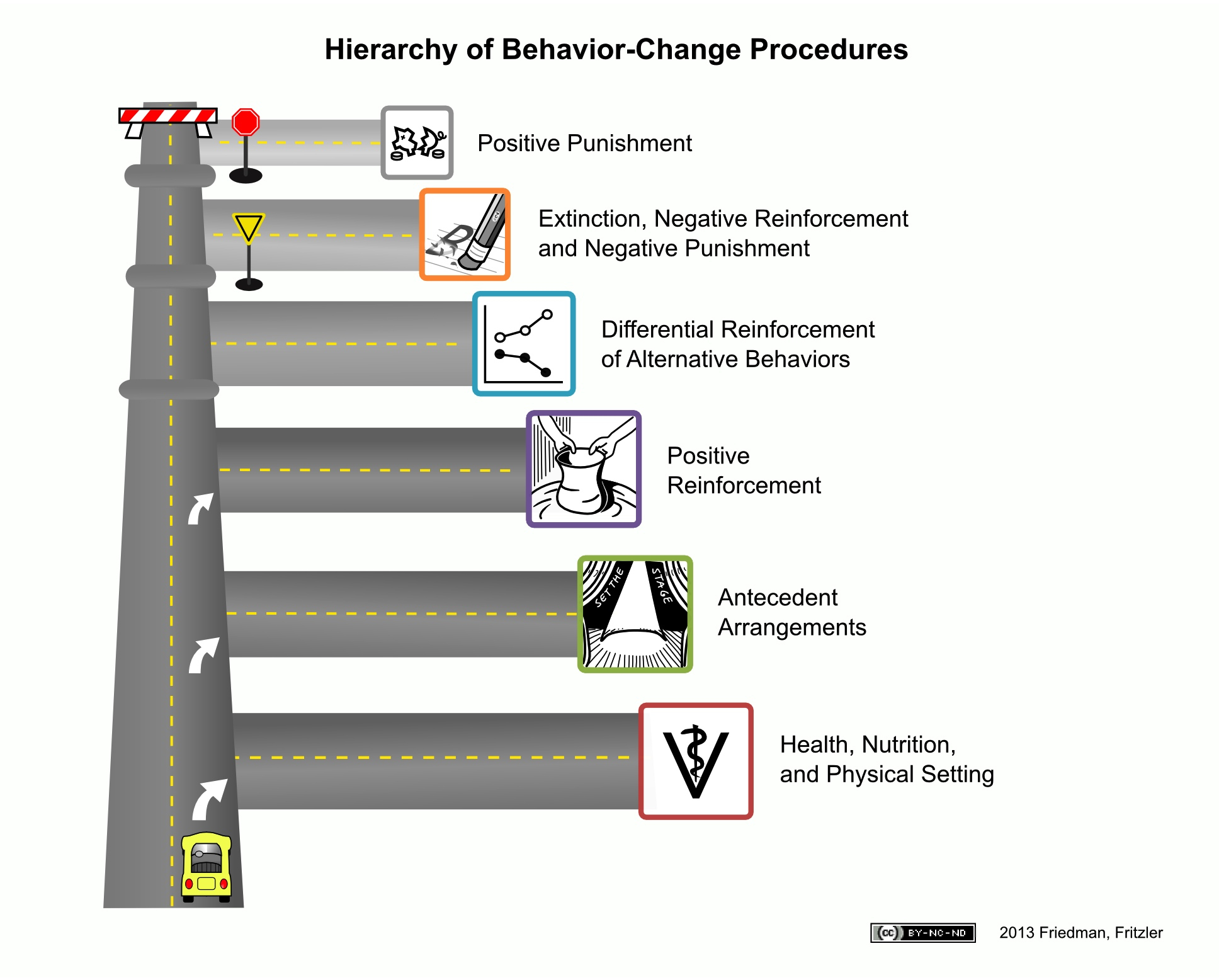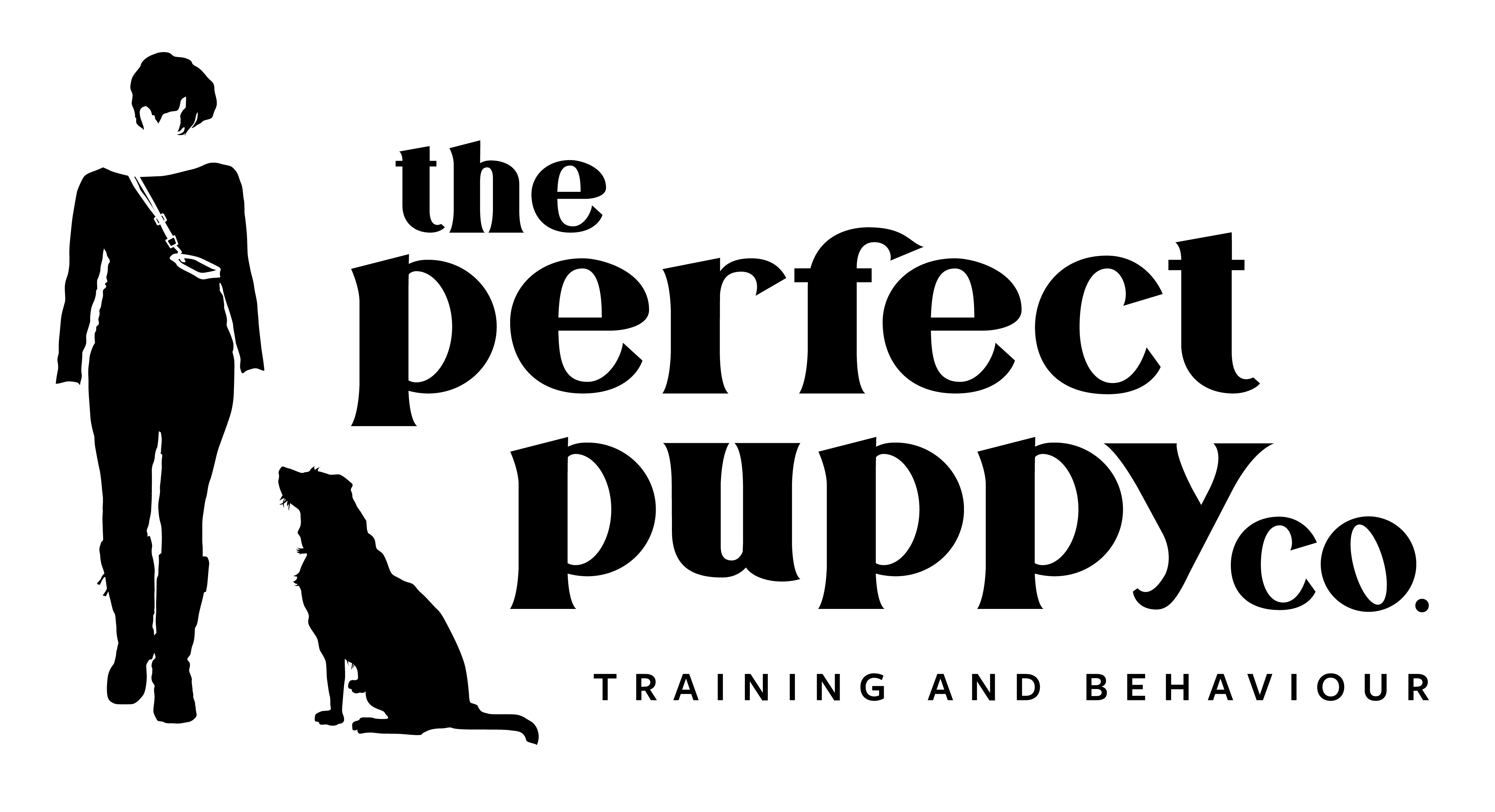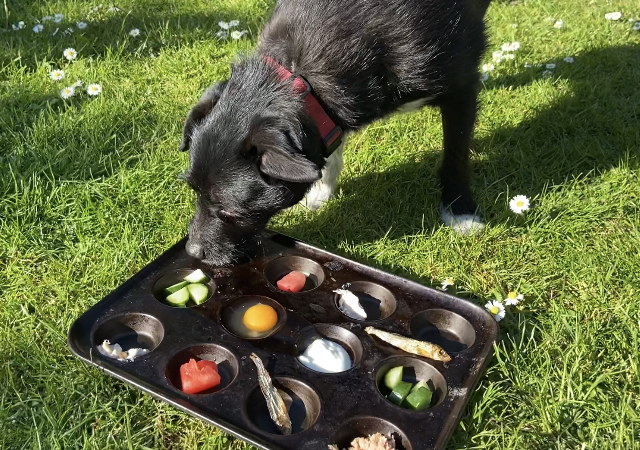Dog Food For Thought: The impact of diet on behaviour
I’m going to kick this blog off my stating clearly that I’m a trainer…not a nutritionist. I’m not claiming to have expert knowledge on the topic of nutrition. These are simply my thoughts on diet based on discussions with clients and my own general experience.
You are what you eat, that’s what they say, isn’t it? We all know that what we put into our bodies affects us physically. But does it also affect us behaviourally? Yes, is the answer. Our diet has a direct impact on our behaviour. Too much caffeine and we become agitated and jittery. Too many additives and colourings can make our children hyperactive and reduce their ability to concentrate. Low levels of some vitamins and minerals can have an adverse affect on our mental health.
Our dogs are no different. A dog’s diet not only affects their physical wellbeing but also their behaviour. Whenever I meet a hyped up, frantic, restless dog who appears to have no off switch I always ask about two things – sleep and diet. Very often they are being fed on a poor quality food with a low nutritional value. Just like children with a poor quality diet high in artificial colourings and additives they can display hyperactivity and an inability to focus or settle.
Dr Susan Friedman’s Humane Hierarchy of Behaviour Change is a ranking of ways behaviour can be changed from least invasive to most invasive. Dr Friedman tells us that the least invasive step, of which a core component is nutrition, must be our staring point in order to ensure the most ethical teaching. So, if we are trying to change our dog’s behaviour, ensuring they have a good diet has to be the first step. A good diet is a critical part of a dog’s welfare.

But how do you do that?
Firstly there is the contentious issue of what type of diet to feed your dog. Raw? Wet Food? Kibble? Feelings on what diet is best for dogs can run high which can make it hard to find impartial, balanced advice. There’s a whole spectrum of opinion from those who would never dream of feeding anything other than a raw diet to those who believe a raw diet to be a danger.
Then once you’ve decided what type of diet you then have to choose a brand. Interpreting food labelling can be a challenge. In general you are looking for meat to be the main ingredient and for the label to list specific ingredients and not vague descriptions e.g. ‘lamb’ as opposed to ‘meat’ or ‘oats’ as opposed to ‘cereal. Additives can be good or bad – some have nutritional value, like amino acids and some have none. For example, colouring is entirely to make the food look appealing to humans and serves no purpose for the dog. All in all it’s difficult for the average dog owner to sort the wheat from the chaff.
My own view is that there is no one ‘right’ answer. Within every diet type there are high quality and low quality foods. There are high quality kibbles and poor quality raw foods (although it does have the be said that the range from within dried foods is vast compared to raw foods. A poor quality dry food is really poor). Choose the diet type that suits your dog and you (and it does have to suit you too….if you have no freezer space raw isn’t going to work for you) and then find the highest quality food of that type that you can afford.
My preferred resource for nutritional information is www.allaboutdogfood.co.uk. This is a fantastic resource which allows you to search for food based on certain parameters – dog’s age, size, food type, brand etc. It then returns all foods that match your criteria, ranks them nutritionally and calculates cost per day.
The results are illuminating and show the huge variation in quality. For example a search for dry food for a 6 yr old dog weighing 12kgs returns results ranging from a nutritional ranking of 98% (Fresco dry raw at £1.87 per day) to just 1% (Omega Tasty at £0.23 per day). For comparison a search for raw food for the same dog returns results ranging from 99% to 87%.
Diet is a welfare issue. It’s our responsibility to feed our dogs the best diet we possibly can, and by doing so, we may also avoid or reduce behavioural problems to their benefit and ours. It can be a hard subject to navigate but the resource listed here is a good place to start.
For the purposes of clarity my own dog, Charlie is fed a largely raw diet (Nutriment, 97%, £0.87 per day) with the occasional kibble meal, which is usually when I’ve forgotten to take the raw out of the freezer! (Truline, 88%, £1.04 per day).
You are what you eat, that’s what they say, isn’t it? We all know that what we put into our bodies affects us physically. But does it also affect us behaviourally? Yes, is the answer. Our diet has a direct impact on our behaviour. Too much caffeine and we become agitated and jittery. Too many additives and colourings can make our children hyperactive and reduce their ability to concentrate. Low levels of some vitamins and minerals can have an adverse affect on our mental health.
Our dogs are no different. A dog’s diet not only affects their physical wellbeing but also their behaviour. Whenever I meet a hyped up, frantic, restless dog who appears to have no off switch I always ask about two things – sleep and diet. Very often they are being fed on a poor quality food with a low nutritional value. Just like children with a poor quality diet high in artificial colourings and additives they can display hyperactivity and an inability to focus or settle.
Dr Susan Friedman’s Humane Hierarchy of Behaviour Change is a ranking of ways behaviour can be changed from least invasive to most invasive. Dr Friedman tells us that the least invasive step, of which a core component is nutrition, must be our staring point in order to ensure the most ethical teaching. So, if we are trying to change our dog’s behaviour, ensuring they have a good diet has to be the first step. A good diet is a critical part of a dog’s welfare.

But how do you do that?
Firstly there is the contentious issue of what type of diet to feed your dog. Raw? Wet Food? Kibble? Feelings on what diet is best for dogs can run high which can make it hard to find impartial, balanced advice. There’s a whole spectrum of opinion from those who would never dream of feeding anything other than a raw diet to those who believe a raw diet to be a danger.
Then once you’ve decided what type of diet you then have to choose a brand. Interpreting food labelling can be a challenge. In general you are looking for meat to be the main ingredient and for the label to list specific ingredients and not vague descriptions e.g. ‘lamb’ as opposed to ‘meat’ or ‘oats’ as opposed to ‘cereal. Additives can be good or bad – some have nutritional value, like amino acids and some have none. For example, colouring is entirely to make the food look appealing to humans and serves no purpose for the dog. All in all it’s difficult for the average dog owner to sort the wheat from the chaff.
My own view is that there is no one ‘right’ answer. Within every diet type there are high quality and low quality foods. There are high quality kibbles and poor quality raw foods (although it does have the be said that the range from within dried foods is vast compared to raw foods. A poor quality dry food is really poor). Choose the diet type that suits your dog and you (and it does have to suit you too….if you have no freezer space raw isn’t going to work for you) and then find the highest quality food of that type that you can afford.
My preferred resource for nutritional information is www.allaboutdogfood.co.uk. This is a fantastic resource which allows you to search for food based on certain parameters – dog’s age, size, food type, brand etc. It then returns all foods that match your criteria, ranks them nutritionally and calculates cost per day.
The results are illuminating and show the huge variation in quality. For example a search for dry food for a 6 yr old dog weighing 12kgs returns results ranging from a nutritional ranking of 98% (Fresco dry raw at £1.87 per day) to just 1% (Omega Tasty at £0.23 per day). For comparison a search for raw food for the same dog returns results ranging from 99% to 87%.
Diet is a welfare issue. It’s our responsibility to feed our dogs the best diet we possibly can, and by doing so, we may also avoid or reduce behavioural problems to their benefit and ours. It can be a hard subject to navigate but the resource listed here is a good place to start.
For the purposes of clarity my own dog, Charlie is fed a largely raw diet (Nutriment, 97%, £0.87 per day) with the occasional kibble meal, which is usually when I’ve forgotten to take the raw out of the freezer! (Truline, 88%, £1.04 per day).

